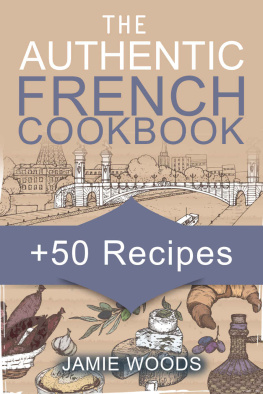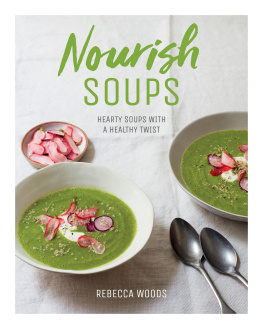Copyright 2021 by Jamie Woods - All rights reserved.
This document is geared towards providing exact and reliable information in regards to the topic and issue covered. The publication is sold with the idea that the publisher is not required to render accounting, officially permitted, or otherwise, qualified services. If advice is necessary, legal or professional, a practiced individual in the profession should be ordered.
- From a Declaration of Principles which was accepted and approved equally by a Committee of the American Bar Association and a Committee of Publishers and Associations.
It is not legal in any way to reproduce, duplicate, or transmit any part of this document in either electronic means or in printed format. Recording of this publication is strictly prohibited and any storage of this document is not allowed unless with written permission from the publisher. All rights reserved.
The information provided herein is stated to be truthful and consistent, in that any liability, in terms of inattention or otherwise, by any usage or abuse of any policies, processes, or directions contained within is the solitary and utter responsibility of the recipient reader.
Under no circumstances will any legal responsibility or blame be held against the publisher for any reparation, damages, or monetary loss due to the information herein, either directly or indirectly.
Respective authors own all copyrights not held by the publisher.
The information herein is offered for informational purposes solely, and is universal as so. The presentation of the information is without contract or any type of guarantee assurance.
The trademarks that are used are without any consent, and the publication of the trademark is without permission or backing by the trademark owner. All trademarks and brands within this book are for clarifying purposes only and are the owned by the owners themselves, not affiliated with this document.
French cuisine is known as the base and the core of several delicacies in the World today. In reality, the past of cuisine cannot be put without a large portion of our current history becoming impacted by French cooks. French cooking's power and popularity are iconic and have earned the status of possessing elegance and sophistication. In modern culinary classes and cooking training, the techniques used in French food are commonly taught. In reality, Le Cordon Bleu in Paris, France, is among the globe's most popular and highly respected cooking school.
French cuisine varies from rural, woodsy dishes to intricate, fine dining and all in among. Northern France lies at one end of the scale: vine crushing, salt processing, and slow-roasted stews.
The Paris custom of elevated dining is from the other end of the spectrum: rich candies, gold-brushed croquembouche, pickling cucumbers, and deep roux.
Next to visual pleasure, there is a heavy focus on flavor and spice in French food. Flattened red Espelette peppers are produced in the Pyrenees, and fleur de sel flakes cover the Region of Biscay's salt mudflats.
Even South vineyards make a few of the finest wine and liquor in the country. Furthermore, much farther down the Mediterranean Sea are the lavender lands and olive trees of Provence.
Although the French is renowned for culinary grandeur, there is no need for French cuisine to be picky. The core of French cuisine, in particular, is to emphasize new, high-quality products so that their basic flavors and formulations stand out. Of course, butter, milk, cheese, and other culinary landmines are the cornerstones of French food, but the plate does not have to be taken over. French cuisine can also be relatively nutritious; it turned out. France is one of the world's healthful nations with tiny sizes of portions and healthy lifestyles support. However, France is abundant in healthy meals, besides the rich fine cuisine.
"French Home Cooking" is a French recipe book. It has four chapters that discuss French cuisine in detail with all the recipes.
The core and underlying of many cuisines around the Western world was commonly called French food and preparation. The impact of French Cuisine cooking methods and their appreciation is iconic. That importance is exactly why it can be overwhelming for a novice to learn French cuisine. French cuisine leaves many cooks believing they have to adhere to a certain beauty and elegance unachievable.
The foundation and many other delicacies are commonly called French food and cuisine since the impact of traditional French cooking is delightful. French cuisine may sound complicated, but basically, it is about making a cohesive meal, like the coq au vin of Burgundy. You can understand how to create vinaigrette in a particular way so that you can seek one of the easiest recipes around you after you have perfected the salad, including a poultry boast that is all soft and tender within.
Different courses can be cooked in French feudal food but consumed all at once. The liquids were deep, sweets were a popular commodity, and the buttercream pie was not produced until the Middle Ages.
Northeastern France now offers a surprising variety of flavors, concentrating on apples, bacon, and pork. The inhabitants are multi-cultural in Metro France, but they also cook traditional French food with fresh fruits, gratin verts, mushrooms, or dried fruits. Typically, they would prepare local meals, getting a real sense of territoriality. Chicken and sheep, particularly common from early fall to February, are accessible year-round, but France does have a surplus.
1.1 The Fascinating History of French Food
Historically, French cuisine background began with explaining culinary contracts and brief recipes in the middle Ages. Nevertheless, let us skip the Dark Ages and reflect on some of the sweeping reforms that happened after the Revolution and get a better understanding of how French cuisine began in history. Until sugar-mania struck the nation in the sixteenth century, French recipes were commonly acidic-sugar placed in water, vinegar, fish, and meat! In later life, this practice brought about a profound shift in French food patterns: a strong distinction has been made among sweet and salty foods, and at the end of a meal, desserts were regularly served.
In the seventeenth century, French food became a blueprint for other foods, in large part. So first of all, this century has seen people start feeding with a fork! While in areas like Italy, the forks were a popular sharpener, the French thought for years that this was a dumb way of dining and used their hands. Intellectual discourse and reading within France had become a hot button topic. During Revolution, cuisine: food was presented as an artistic medium and debated in peace, science, and religion.
French food had become more available by the end of the eighteenth century, well into the 19th, "cuisine bourgeoise" recipe books became quite famous. Usually chocolatey, rich in beef, spices and baked for periods in boiling jus (flavors), this food was an evolution of court-served aristocratic cooking. Instances of this food are local dishes such as boeuf bourguignon, bouillabaisse, coq-au-vin, and gratin dauphinoise, as well as mother roux sauce. In comparison, the French Revolution reached a decisive point in the food industry when it triggered the guild members' collapse. Any French chef could produce and sell any food commodity they desired, with guilds no more operational. This lead to a form of awakening within the French food sector. More gourmet experts have begun to discover numerous pathways for various types of recipes and meals.

















